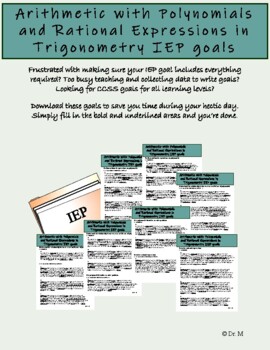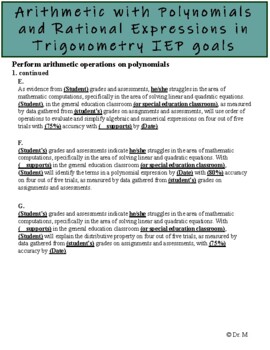Arithmetic with Polynomials and Rational Expressions in Trigonometry IEP goals
- PDF
Also included in
- Do you feel frustrated and overwhelmed with everything on your plate? No need to sweat the small stuff. Relieve your current and future headaches with these premade IEP goals. There is no mixing and matching needed. These are premade High School Trigonometry IEP goal bundles designed to save you valPrice $40.00Original Price $45.00Save $5.00
Description
Are you frustrated and overwhelmed with everything on your plate, especially during this time of COVID-19? No need to sweat the small stuff. Relieve your current and future headaches with these premade IEP goals. There is no mixing and matching needed. This premade High School Arithmetic with Polynomials and Rational Expressions in Trigonometry IEP goals bundle is designed to save you valuable time, frustration, and headaches. Simply fill in the bold information to personalize each goal.
This is a High Schools Arithmetic with Polynomials and Rational Expressions in Trigonometry IEP goals bundle. All goals are aligned with Common Core standards and written for IDEA compliance. Each goal has several options to choose from, depending on the student's academic level and whether they are inclusive or self-contained. Every Common Core standard is listed for easy reference according to the skill.
PLEASE NOTE the purchase of one license for this product grants permission for use by one classroom/teacher only.






